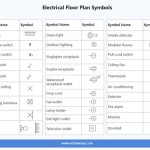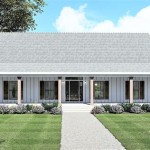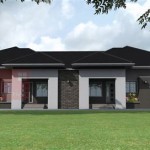Pier and Beam Foundation Home Plans: A Comprehensive Guide
Building a home is a significant investment, and choosing the right foundation is a crucial aspect of the process. Among the various foundation types, pier and beam foundations are popular for their versatility and cost-effectiveness. This article will delve into the intricacies of pier and beam foundation home plans, providing a comprehensive overview and highlighting its advantages, disadvantages, and suitability in different situations.
Understanding Pier and Beam Foundations
A pier and beam foundation, also known as a crawl space foundation, consists of concrete piers supporting wooden beams that serve as the base for the structure. The space between the ground and the beams, known as the crawl space, provides access for plumbing, electrical, and other utility lines. This foundation type is commonly used in areas with sloping terrain, high groundwater levels, or where termite infestation is a concern.
Advantages of Pier and Beam Foundations
Pier and beam foundations offer several advantages over other foundation types, making them a preferred choice for certain situations:
1. Cost-Effectiveness
Pier and beam foundations generally cost less than other options like slab foundations or basement foundations. This is because they require less concrete and labor, especially when compared to a full basement. This cost-efficiency can be a significant factor for budget-conscious homeowners.
2. Ventilation and Accessibility
The crawl space provides ample ventilation, which helps control moisture levels and prevent mold growth. The accessibility of the crawl space allows for easy inspection and maintenance of plumbing, electrical, and other systems.
3. Adaptability to Sloping Terrain
Pier and beam foundations are well-suited for sloping terrain. The individual piers can be adjusted to level the structure on uneven ground, making construction more straightforward.
4. Termite Resistance
The elevated structure and open crawl space offer protection against termites. The crawl space can be treated with termite-resistant materials, reducing the risk of infestation.
Disadvantages of Pier and Beam Foundations
While pier and beam foundations offer advantages, they also have some drawbacks:
1. Susceptibility to Moisture Problems
The crawl space can be prone to moisture issues, especially in humid climates or areas with high groundwater levels. Improper ventilation or poor drainage can lead to mold growth and wood rot.
2. Limited Living Space
The crawl space is typically not suitable for living spaces, limiting the usable area of the home.
3. Seismic Vulnerability
Pier and beam foundations can be vulnerable in areas prone to earthquakes. The flexibility of the wooden beams could lead to structural damage during seismic events.
4. Maintenance Requirements
Proper ventilation and moisture control in the crawl space require regular inspection and maintenance. This can add to the ongoing upkeep costs.
Suitability of Pier and Beam Foundations
Pier and beam foundations are suitable for various situations, but they are particularly well-suited for:
1. Areas with Sloping Terrain
The ability to adjust pier heights makes them ideal for building on uneven ground.
2. Areas with High Groundwater Levels
The elevated structure helps prevent water damage from flooding.
3. Areas Prone to Termite Infestation
The crawl space can be treated to deter termite activity.
4. Budget-Conscious Homeowners
The lower construction costs make pier and beam foundations a cost-effective option.
Considerations for Pier and Beam Foundations
When considering pier and beam foundations, it's essential to factor in the following considerations:
1. Local Building Codes
Building codes vary by location, and it's crucial to ensure the foundation design complies with local regulations.
2. Soil Conditions
The type of soil in the area will affect the design and depth of the piers.
3. Climate
Humidity and rainfall patterns will impact the ventilation and moisture control requirements in the crawl space.
4. Environmental Concerns
The potential for environmental impact, such as groundwater contamination, should be assessed.
Conclusion
Pier and beam foundations offer a unique combination of advantages and disadvantages, making them suitable for specific situations. By carefully considering their pros and cons, homeowners can determine if this foundation type meets their needs and budget.

Raised Cabin Floor Construction Google Search Pier And Beam Foundation Building A Deck Plans

How To Modify A Standard Post And Pier Foundation Plan
Pier And Beam Foundation Diagram Design Guide

How To Build A Concrete Pier Foundation Shedplans Org

Pier And Beam Cabin Foundation Construction Contractors Your Kingston Jamaica Answer Construccion De Cabañas Casas En Colinas Casa

Pier And Beam Foundation Construction Design

Beach House Plan On Post And Pier Foundation 62795dj Architectural Designs Plans

Pier And Beam Foundations Khouse Progress Life Of An Architect

Pier And Beam Foundation Repair For Oakland San Francisco

Pier And Beam Foundations Building Cost Problems








